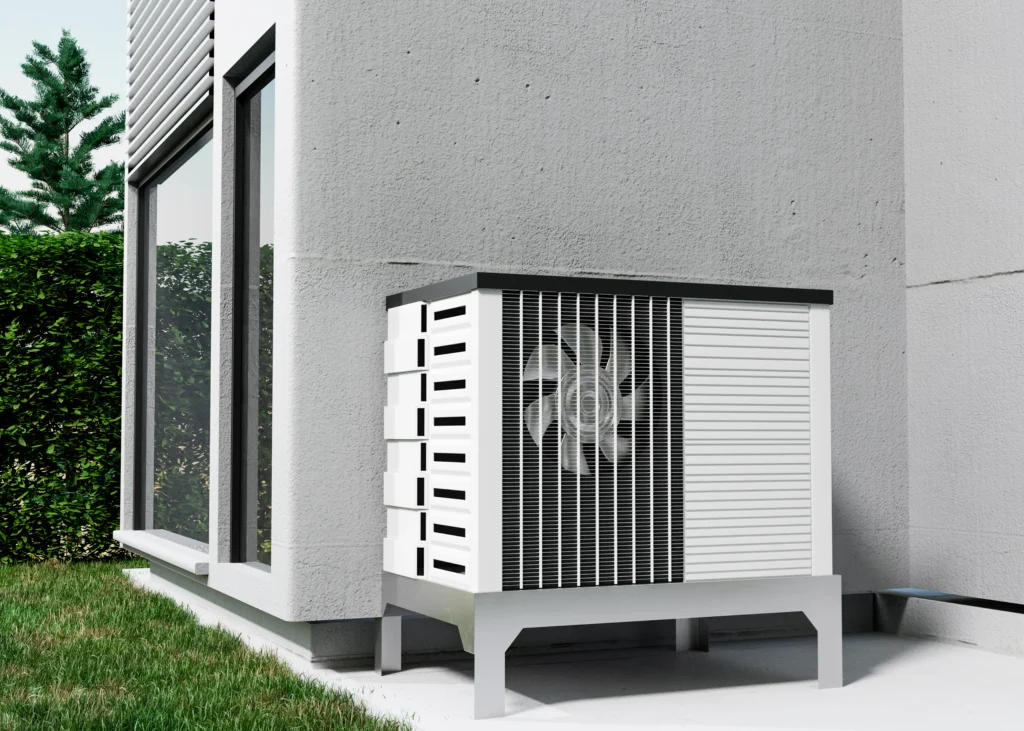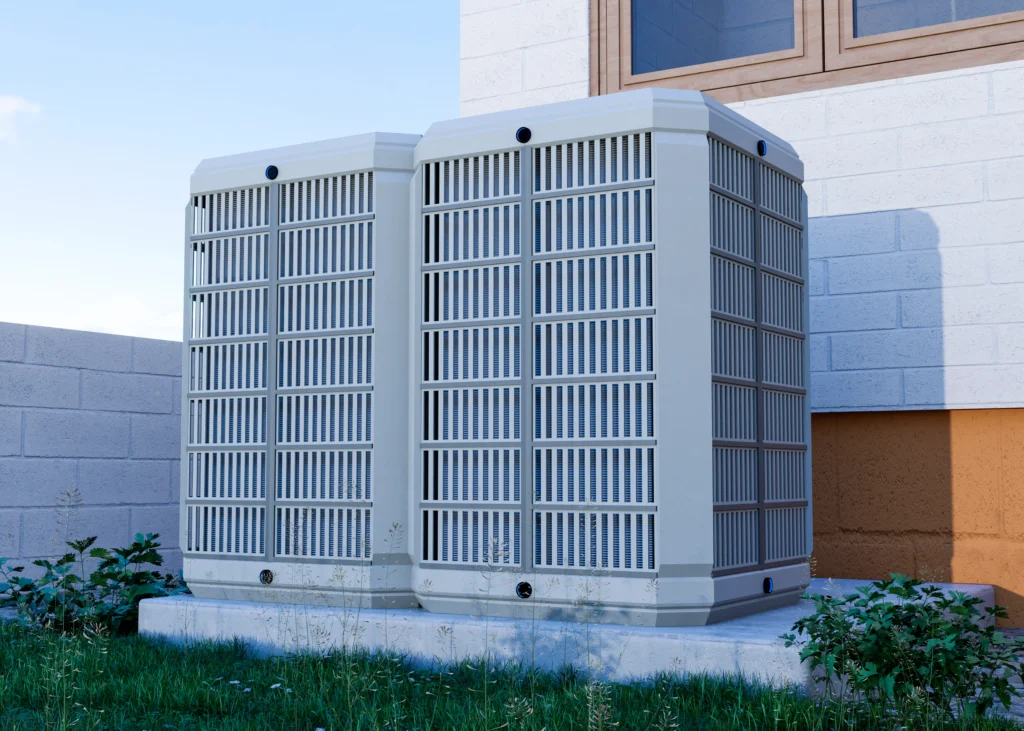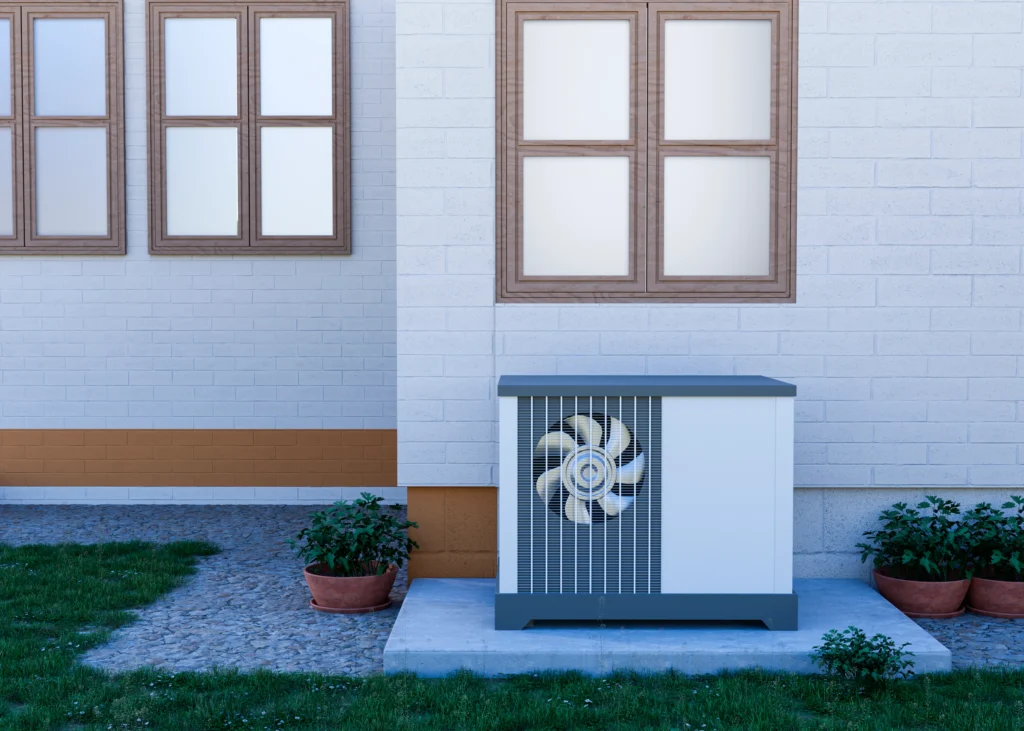How Do Heat Pumps Work: A heat pump is a versatile and efficient heating, ventilation, and air conditioning (HVAC) system that can provide both heating and cooling for residential and commercial buildings. It works by transferring heat energy from one place to another, utilizing a small amount of energy to move heat from a lower temperature to a higher temperature or vice versa. This process makes heat pumps an environmentally friendly and cost-effective solution for maintaining indoor comfort.
Table of Contents
ToggleHow Do Heat Pumps Work In Winter: Step-By-Step Detail

Heat pumps are highly efficient systems that provide both heating and cooling for residential and commercial spaces. Understanding how heat pumps work involves a step-by-step breakdown of their operation.
Absorption of Heat
The process begins with the heat pump absorbing heat from the air, ground, or water source, depending on the type of system. In heating mode, the outdoor heat is absorbed, and in cooling mode, indoor heat is absorbed.
Compression
The refrigerant, a substance with low boiling and condensing points, then compresses the absorbed heat. The compressor plays a crucial role in raising the temperature and pressure of the refrigerant.
Heat Exchange in Condenser
The hot, pressurized refrigerant is then passed through the condenser coil, located either indoors or outdoors. Here, the refrigerant releases its heat to the surrounding air or water, causing it to condense into a high-pressure, high-temperature liquid.
Expansion Valve
The high-pressure liquid then moves through the expansion valve, where it undergoes a sudden drop in pressure. This results in the refrigerant transforming into a low-pressure liquid-gas mixture.
Evaporation in the Evaporator Coil
The low-pressure refrigerant is now ready to absorb heat again. It enters the indoor evaporator coil, and as it evaporates, it absorbs heat from the surrounding air. This process cools the indoor space during the cooling mode.
Return to Compressor
The cycle repeats as the refrigerant, now in a gaseous state, returns to the compressor to restart the process. The continuous circulation of the refrigerant enables the heat pump to provide consistent heating or cooling.
By using the principles of thermodynamics, heat pumps can move heat from a lower-temperature space to a higher-temperature space, making them versatile and energy-efficient solutions for temperature control. Their ability to reverse the refrigeration cycle allows them to function as both heaters and air conditioners, offering year-round comfort with reduced energy consumption compared to traditional heating or cooling systems.
Types Of Heat Pumps

Heat pumps come in various types, each tailored to specific needs and environmental conditions:-
- Air-Source Heat Pumps (ASHP): These extract heat from the outdoor air for both heating and cooling, making them versatile and commonly used.
- Ground-Source Heat Pumps (GSHP): Utilizing the stable temperature of the ground, GSHPs are highly efficient but may require more installation effort.
- Water-Source Heat Pumps (WSHP): Extracting or rejecting heat to a water source, such as a lake or well; WSHP is efficient but requires proximity to a water body.
Choosing the right type depends on factors like climate, available space, and installation considerations, ensuring optimal performance and energy efficiency for diverse heating and cooling requirements.
Essential Components Of A Heat Pump System
- Outdoor Unit – This contains the compressor, condenser coil, and fan, which are responsible for extracting heat from or releasing heat into the outdoor environment.
- Indoor Unit – Includes the evaporator coil or heat exchanger, which is responsible for transferring heat to or from the indoor space.
- Refrigerant – The fluid circulating within the system that absorbs and releases heat as it changes state from a liquid to a gas and back again.
- Compression – The process of raising the temperature and pressure of the refrigerant gas using a compressor.
- Reversing Valve – Controls the direction of refrigerant flow, enabling the heat pump to switch between heating and cooling modes.
- Expansion Valve – Regulates the flow and pressure of the refrigerant, causing it to expand and cool as it enters the evaporator coil or heat exchanger.
Heat Pump Installation

Heat pump installation is a meticulous process crucial for optimal performance and energy efficiency. First, a site assessment is conducted to determine the ideal location for the outdoor and indoor units, considering factors like sun exposure, airflow, and noise considerations. The outdoor unit is typically installed near the heat source, while the indoor unit is strategically placed for efficient air distribution.
Next, refrigerant and electrical lines are carefully connected between the indoor and outdoor units. Proper insulation and sealing ensure minimal heat loss during the transfer process. Ductwork may be installed for forced-air systems. Precise calibration of components, such as the thermostat and expansion valve, is essential for optimal functionality.
Professional installation is recommended to adhere to local codes, ensuring safety and efficiency. Regular maintenance checks and follow-up inspections are vital to prolong the heat pump’s lifespan and maintain its performance.
FAQ More About How Do Heat Pumps Work
Is A Heat Pump Better Than an AC?
Yes, a heat pump is often considered better than traditional AC because it provides both heating and cooling functions, offering year-round comfort and energy efficiency in diverse climates.
How Long Do Heat Pumps Last?
Heat pumps typically last 15 to 20 years with proper maintenance. Regular inspections, cleaning, and timely repairs can extend their lifespan, ensuring consistent performance and energy efficiency over the years.
How Do Heat Pumps Work, and What Are Their Key Components?
Heat pumps work by transferring heat from one place to another using refrigerant and a compressor. The key components include the evaporator, compressor, condenser, and expansion valve.
How Do Heat Pump Water Heaters Work, and What Makes Them Energy Efficient?
Heat pump water heaters operate by extracting heat from the surrounding air and transferring it to the water in the tank. This process is highly efficient, as it requires less electricity compared to traditional water heaters.
How Do Heat Pumps Work in Winter, and Can They Still Provide Warmth in Cold Weather?
Despite their name, heat pumps can still extract heat from the outdoor air even in cold temperatures. They work by reversing the refrigeration cycle to provide warmth indoors, making them suitable for use in winter climates.
How Cold Do Heat Pumps Work, and What Are Their Limitations in Extreme Cold?
Heat pumps can effectively operate in temperatures as low as -15°C to -20°C, but their efficiency may decrease in extremely cold conditions. In such cases, supplemental heating may be required to maintain comfort levels indoors.
Heat Pumps: How Do They Work to Provide Both Heating and Cooling?
Heat pumps utilize a reversible refrigeration cycle to provide both heating and cooling. In heating mode, they extract heat from the outdoor air and transfer it indoors, while in cooling mode, they remove heat from indoors and release it outside.
How Do Heat Pumps Work Compared to Traditional Heating Systems, and What Are Their Advantages?
Unlike traditional heating systems that generate heat, heat pumps simply transfer heat from one location to another, making them more energy efficient. Their advantages include lower operating costs, reduced carbon emissions, and versatility in providing both heating and cooling.
How Do Heat Pumps Work in Conjunction with Underfloor Heating Systems?
Heat pumps can efficiently supply heat to underfloor heating systems by circulating warm water through the pipes embedded in the floor. This method of heating provides even warmth throughout the space and maximizes energy efficiency.
How Do Heat Pumps Work in Residential Applications, and What Size Heat Pump Do I Need for My Home?
Heat pumps are commonly used in residential settings to provide heating and cooling. The size of the heat pump needed for your home depends on factors such as the size of the space, insulation levels, and climate conditions. Consulting with a qualified HVAC professional can help determine the appropriate size for your specific needs.
Conclusion
Heat pumps work by transferring heat between indoor and outdoor environments, offering both heating and cooling capabilities. Utilizing refrigerant and the principles of thermodynamics efficiently provides comfort. Notably, advancements now allow heat pumps to operate efficiently even in extreme temperatures, such as giving effective cooling down to 75 degrees AC. This versatility and energy efficiency make heat pumps a sustainable and reliable choice for year-round temperature control.
